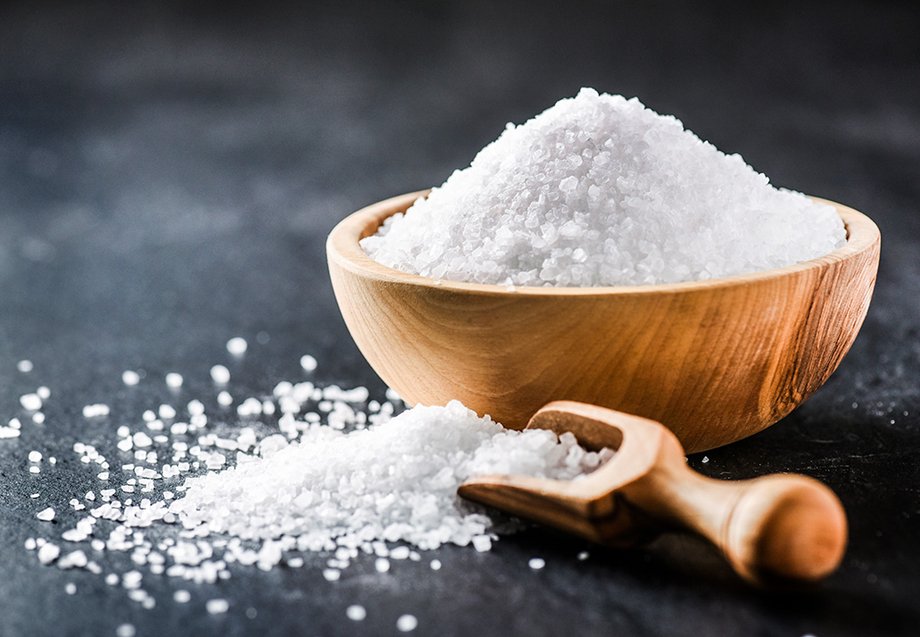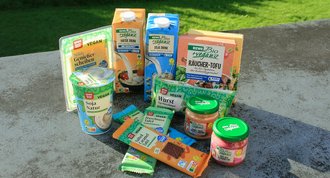
Iodine deficiency - it sounds like a problem from days long gone. But even today, the supply of this vital trace element is inadequate; according to the criteria of the World Health Organisation (WHO), Germany has a mild iodine deficiency. The Federal Ministry of Food and Agriculture (BMEL) is therefore drawing attention to this important issue with the information campaign "If salt, then iodised salt". We support this and provide information on the most important facts.
Why is iodine important? How does a deficiency become noticeable?
Iodine has an important function in the formation of thyroid hormones - and these in turn control important metabolic processes in the body: the regulation of heat balance and the development of bones and the brain. Iodine is therefore vital for us. The consequences of an undersupply vary in severity: a long-term deficiency can lead to an enlarged, dysfunctional thyroid gland ("goitre"). Tiredness, mental and physical weakness, weight gain, slowed heartbeat, pale skin and brittle nails, concentration problems and depressive moods can be the result.
How is iodine absorbed? How does a deficiency occur?
Iodine is usually present in the soil, so it is absorbed with the food we grow. Agricultural soils in Germany contain too little iodine due to unfavourable geological conditions. We have to supplement it because the body cannot produce iodine itself.
How is it determined that there is an iodine deficiency in the population? What is the situation in other countries?
Iodine deficiency can be detected by analysing urine samples. The thyroid gland can absorb and accumulate around 40 per cent of the iodine consumed, the rest is excreted. According to the Robert Koch Institute (RKI), 32 per cent of adults and 44 per cent of children and adolescents in Germany have an increased risk of iodine deficiency.
Other countries also suffer from iodine deficiency. The World Health Organisation (WHO) estimates that up to one billion people worldwide are affected by iodine deficiency. In some European countries, iodised salt prophylaxis is already regulated by law. In Asia, people consume much more fish, seafood and algae - iodine deficiency is less common here.
 The BMEL recommends using iodised salt to ensure sufficient iodine intake. Copyright: Milan Krasula | Getty Images.
The BMEL recommends using iodised salt to ensure sufficient iodine intake. Copyright: Milan Krasula | Getty Images.
How do we get enough iodine?
Preventing or compensating for an iodine deficiency is easy: with the consistent use of salt that is enriched with iodine. When using salt in the home kitchen or when buying processed foods, experts recommend always looking for the labels "with iodine", "iodised" or "enriched with iodine".
How much iodine do we need every day? Can we consume too much?
The recommended daily intake of iodine for adults is 180 to 200 micrograms (µg). Pregnant and breastfeeding women need 230 and 260 micrograms respectively. This is the recommendation of the German Nutrition Society (Deutsche Gesellschaft für Ernährung e.V.).
The amount of iodine that can be added to salt is regulated by law. In Germany, it is 15 to 25 milligrams per kilogramme of salt. This amount makes it very unlikely that too much iodine will be ingested. With the recommended salt consumption of five to six grams per day, approximately 100 to 120 micrograms of iodine are ingested.
Table salt (also known as cooking salt or table salt): There are three different types, namely evaporated salt (obtained from brine), rock salt (mined) and sea salt (obtained from seawater). All three have the same composition of sodium and chlorine.
Herbal salt: Table salt enriched with herbs and spices, for example tomato salt, garlic salt, herb salt.
Fleur de sel: Mild salt from salt marshes on the Mediterranean coast, untreated and hand-scooped. To preserve its special flavour, it should only be used in cold dishes.
Himalayan salt: Consists of up to 98 per cent pure sodium chloride. Traces of iron oxide give it its characteristic red colour.
All these salts naturally contain only small amounts of iodine and are therefore not recommended by experts to cover the daily iodine requirement. However, it is possible for manufacturers to fortify their salt varieties with iodine. This can be recognised by labels such as "with iodine", "iodised" or "enriched with iodine".

„The iodine supply has deteriorated in recent years, which is partly due to a decline in the use of iodised salt in processed foods. Dietary habits have also changed. To counteract iodine deficiency and thus support the healthy function of the thyroid gland, we launched an information campaign last year. The message is "If salt, then iodised salt". Our aim is to motivate consumers and the food industry to use iodised salt. This is because the natural iodine content of foods is generally not sufficient to cover iodine requirements. This is why the use of iodised salt is so important when salting (sparingly).“Eva Bell, Head of Department "Consumer Health Protection, Nutrition" at the BMEL:

Sources: bmel.de, topagrar.com, wikipedia.de










